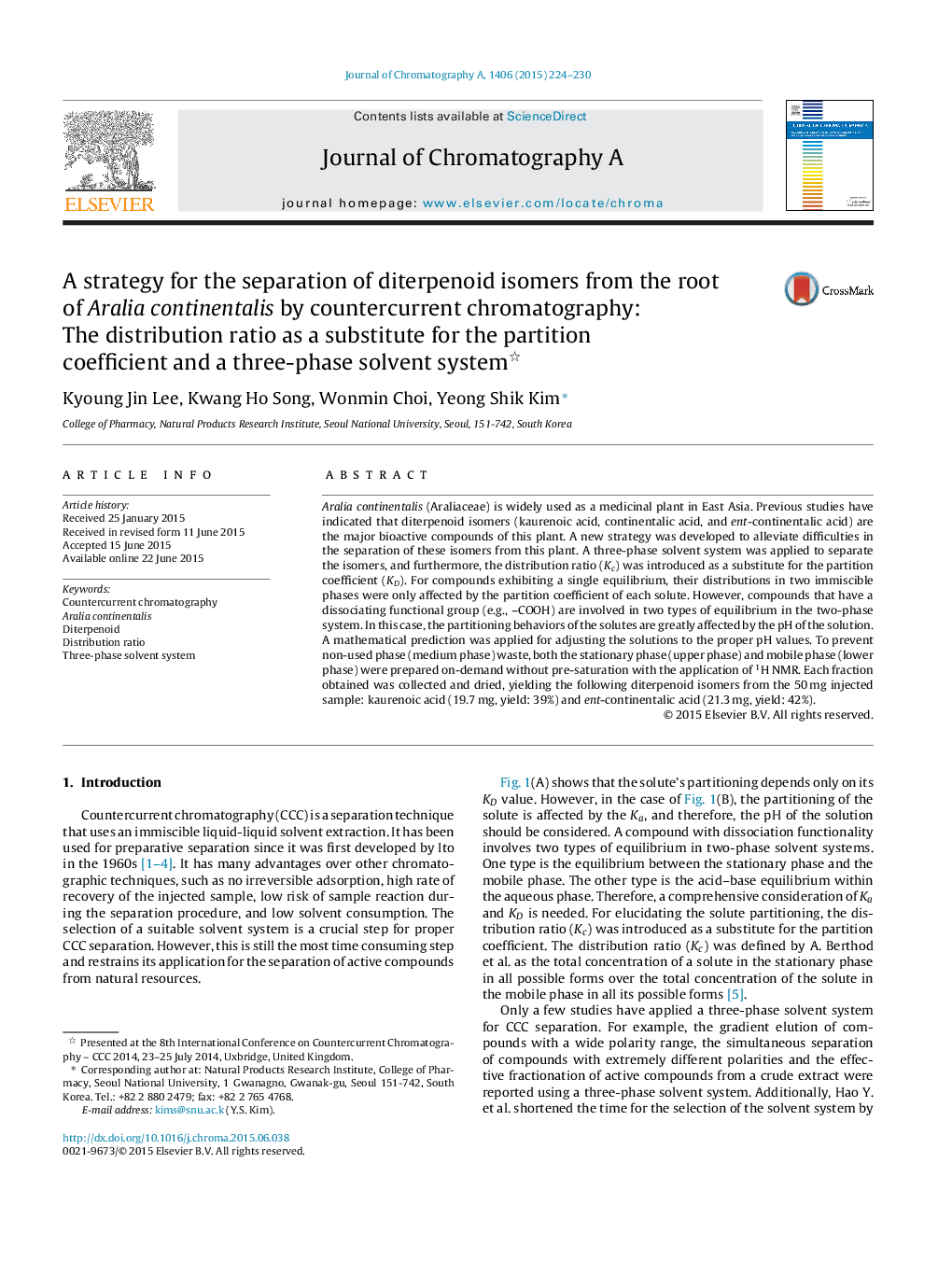| کد مقاله | کد نشریه | سال انتشار | مقاله انگلیسی | نسخه تمام متن |
|---|---|---|---|---|
| 1199246 | 1493520 | 2015 | 7 صفحه PDF | دانلود رایگان |

• A new three-phase solvent system for the separation of diterpenoid acid isomers.
• The distribution ratio (D) as a substitute for the partition coefficient.
• Selection of the solvent system pH by mathematical prediction and its application.
Aralia continentalis (Araliaceae) is widely used as a medicinal plant in East Asia. Previous studies have indicated that diterpenoid isomers (kaurenoic acid, continentalic acid, and ent-continentalic acid) are the major bioactive compounds of this plant. A new strategy was developed to alleviate difficulties in the separation of these isomers from this plant. A three-phase solvent system was applied to separate the isomers, and furthermore, the distribution ratio (Kc) was introduced as a substitute for the partition coefficient (KD). For compounds exhibiting a single equilibrium, their distributions in two immiscible phases were only affected by the partition coefficient of each solute. However, compounds that have a dissociating functional group (e.g., –COOH) are involved in two types of equilibrium in the two-phase system. In this case, the partitioning behaviors of the solutes are greatly affected by the pH of the solution. A mathematical prediction was applied for adjusting the solutions to the proper pH values. To prevent non-used phase (medium phase) waste, both the stationary phase (upper phase) and mobile phase (lower phase) were prepared on-demand without pre-saturation with the application of 1H NMR. Each fraction obtained was collected and dried, yielding the following diterpenoid isomers from the 50 mg injected sample: kaurenoic acid (19.7 mg, yield: 39%) and ent-continentalic acid (21.3 mg, yield: 42%).
Journal: Journal of Chromatography A - Volume 1406, 7 August 2015, Pages 224–230